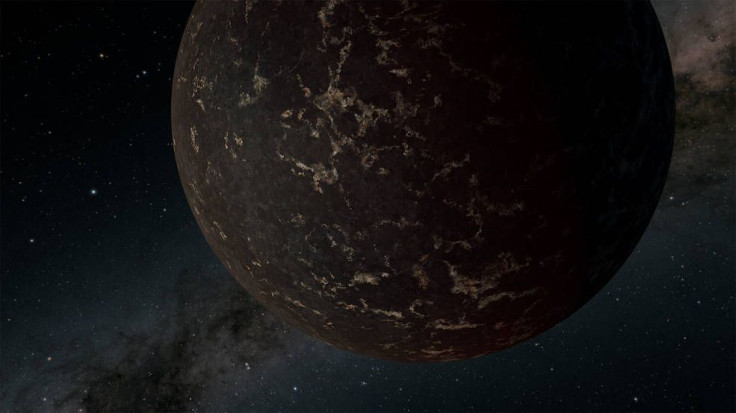NASA Snaps Rare Photo Of Rocky Planet's Surface 48 Light-Years From Earth

For the first time, NASA was able to capture a photo of the surface conditions of an exoplanet orbiting a star using its Spitzer Space Telescope. According to the agency, the exoplanet does not have an atmosphere.
The alien planet photographed by Spitzer is called LHS 3844B and is about 48.6 light-years from Earth. It is about 1.3 times larger than Earth and orbits a cool type of star known as an M dwarf.
As seen in the latest image taken by the space telescope, the exoplanet has a generally rocky surface. According to NASA, the entire planet is most likely covered in cooled volcanic material, which would explain its dark and rocky appearance.
Observations on the planet revealed that it doesn’t have an atmosphere, which indicated that there is no air in LHS 3844B to transfer heat around the planet. This results in a huge difference in temperature between the hot and cold sides of the planet.
“The temperature contrasts on this planet is about as big as it can possibly be,” Laura Kreideberg, the lead author of the new study regarding the planet said in a statement.
“That matches beautifully with our model of a bare rock with no atmosphere,” she added.
For the first time, data from our @NASASpitzer Space Telescope shows the surface conditions of a planet orbiting another star. 🔍 The hot, rocky planet is 1.3 times the size of Earth, but has no atmosphere. Discover more: https://t.co/x3ADKNUNbP pic.twitter.com/5xq4jzVxSV
— NASA (@NASA) August 19, 2019
As noted by Kreideberg, one of the main points of the study is to understand how LHS 3844B’s atmosphere disappeared since it is a crucial component of a planet’s ability to host life. On Earth, the atmosphere is the main reason why the planet has liquid water on the surface.
“We’ve got lots of theories about how planetary atmospheres fare around M dwarfs, but we haven’t been able to study them empirically,” Kreidberg said. “Now, with LHS 3844B, we have a terrestrial planet outside our Solar System where for the first time we can determine observational that an atmosphere is not present.”
According to Kreidberg’s team, LHS 3844b’s host star is largely responsible for the disappearance of the planet’s atmosphere. Unlike stars that are like the Sun, M dwarfs are known to emit high levels of ultraviolet light that can cause the atmosphere of a nearby planet to erode.
The findings of Kreidberg and her team were presented in a new study published in the journal Nature.
© Copyright IBTimes 2025. All rights reserved.





















